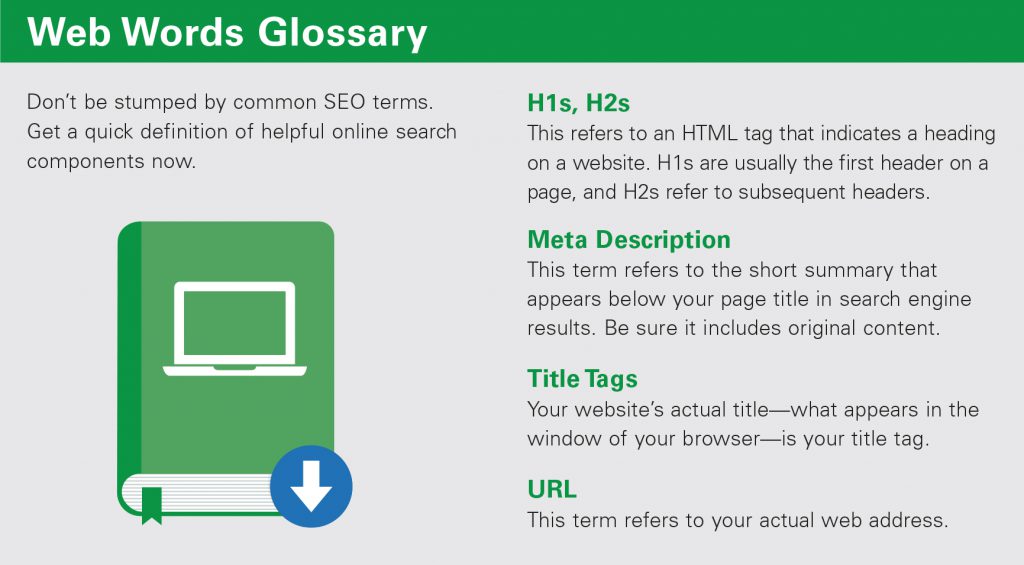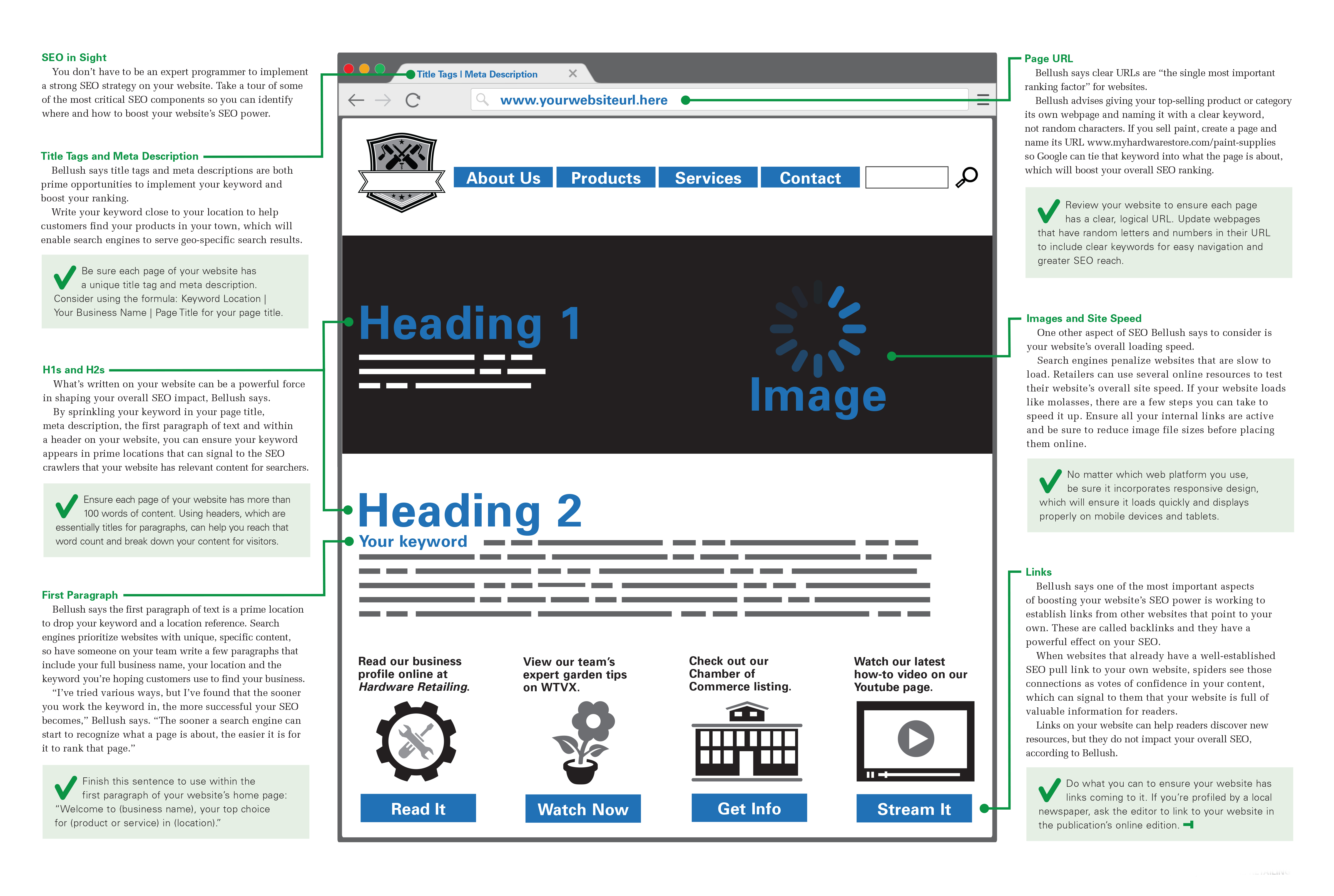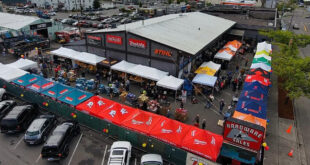By Todd Taber, ttaber@nrha.org
Coming Into Focus
If you have a website, but no one can find it, do you even have a website?
Many business owners today know that having a web presence is a necessity. Studies show even simple websites that give customers a broad look at your products, an overview of your services and a bit of history about your operation can engage shoppers and make them more likely to visit in person.
But these days, it’s not enough to simply have a website. Operators are using search engine optimization (SEO) to ensure their websites are found among the top results on popular search engines. Whether a homeowner is looking for online inspiration for their kitchen renovation or a contractor is quickly searching for a hardware store with stainless steel rebar, even a simple SEO strategy can put your business right at their fingertips.
SEO refers to the steps you can take to ensure many key elements of your website are working in harmony to be recognized by search engines as content-rich and relevant to searches. By using these elements to implement a keyword strategy on your website, you can aim to appear as a top search result when customers are looking for your products and services in your town.
On the following pages, broaden your SEO knowledge by learning more about how it’s evaluated by major search engines. Take a dive into the anatomy of a website to identify the elements you can use to position your business for new success through online searches.
Showcasing your web presence is becoming an increasingly important component to retail success. Learn how you can use SEO to help customers discover your business in perfect clarity.
How Does SEO Work?
When you do an online search, how exactly are the results compiled? Answering that question can help you understand basic SEO principles and recognize how you can set up your website for powerful SEO visibility.
According to Google analysts, there are three main methods to rank websites. The first is called crawling, in which search engines scour the internet using “spiders” to look for new content to analyze and use within search results.
The second process, called indexing, aims to help search engines understand what a website is about. By analyzing the content of a website (the text, photos, videos and code), search engines can categorize a website within an index of similar sites.
“If you don’t have a website that shows up on the first page of a search, there’s a good chance you’ll be losing out on a lot of business.”
—Michael Bellush, HighMark SEO Digital
The third part, according to Google, is serving websites in searches. All search engines will use their indexes to display results that match a searcher’s query. Search engines personalize the results based on a user’s previous browsing history, their location and what kind of device they’re using, Google reports.
In short, ensuring your website clearly identifies your industry, main products and services and location can be a powerful—and free—way to rank higher in online searches and introduce your business to new customers as they search for reliable home improvement retailers near them.

Making an SEO Splash
Michael Bellush, founder of Indianapolis marketing firm HighMark SEO Digital, says it’s important to regularly update your website to ensure it is using current best practices to appear as high as possible on search engine results pages.
“The real value of SEO is that in today’s world, roughly 90 percent of people start their buying process by doing an online search,” Bellush says. “It’s not just to do product research; it might be to get information about a specific business. If you don’t have a website that shows up on the first page of a search, there’s a good chance you’ll be losing out on a lot of business.”
For many retailers, a robust, SEO-friendly website is a vital component for any operator’s marketing efforts. Writing for Forbes, founder of content marketing firm AudienceBloom Jayson DeMers says nearly two-thirds of website visits originate from searches on well-known platforms like Google and Bing. Only 6 percent occur from paid advertising, like Google Ads.
What’s more, Google estimates that half of all customers who search for local business information on a mobile device visit a store on the same day. The good news doesn’t end there; 18 percent of local mobile searches lead to a sale within one day, showing how critical SEO is for your operation’s success both online and in-store.
Click here to download a PDF of this story.
 Hardware Retailing The Industry's Source for Insights and Information
Hardware Retailing The Industry's Source for Insights and Information








